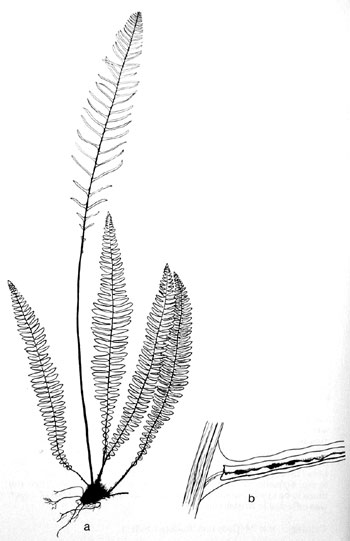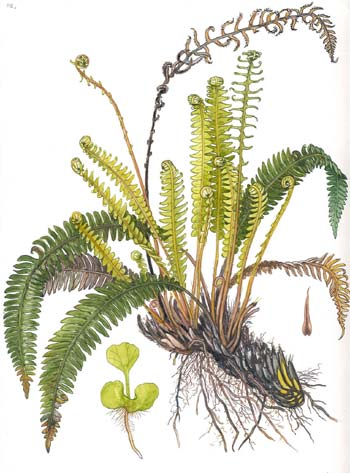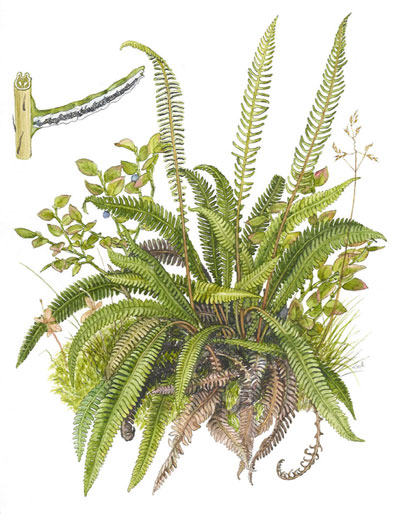|
Hardy Fern Home B. spicant resources All Ferns � Blechnaceae �� Blechnum
�Other Genera
|
| Blechnum spicant | ||
Deer fern, hard fern | ||
|
Etymology
Spicant means spike-like.
Description
Rhizome: erect, pointed, dark purple-brown scales.
Frond: 60 cm high by 15 cm wide, evergreen sterile fronds, dimorphic, fertile leaves appearing later, more erect than sterile, blade/stipe ratio: 3:1 in the sterile fronds, but the fertile frond stipe is longer. Stipe: fertile reddish brown to purple-black, sterile reddish brown, half the length of the fertile, the color extending up into the rachis, as for the rhizome, fewer scales above, vascular bundles: at least 3 vascular bundles arranged in arc. Blade: 1-pinnate, less divided above, linear-ovate, leathery, glossy, dark green in maturity, young fronds are often red, blade glabrous, rachis, costa, a few scales below. Pinnae: 40 to 50 pair, to 3 cm, fertile very narrow, 2 mm, sterile narrow, 5 mm, both slightly curving upwards; margins entire, slightly to moderately folded under; veins sterile:free, often forked; fertile: veins of fertile leaves united to form sorus-bearing secondary vein parallel to costa or costule. Sori: elongate, continuous, on both sides of the costae, indusium: flap-like, gray-white, opening towards the costa, sporangia: black, maturity: midsummer to early fall. Culture
Habitat: wet, acidic, coniferous woods and swamps .
Distribution: Europe, northwestern North America, Japan, northern Asia.
Hardy to -25�C, USDA Zone 5.
Synonyms
Osmunda spicant Linnaeus Struthiopteris spicant (Linnaeus) Weis |
|
|

Blechnum spicant. fertile fronds upright, sterile shorter; indusium opening towards the costa. �Illustration by V. Fulford from Ferns and Fern Allies of Canada, William J. Cody and Donald M. Britton, 1989, � Agriculture Canada, used with permission. |

Blechnum spicant. Habit, early spring, new and old fronds; sporeling below; stipe scales at right. �Illustration from Scandinavian Ferns by Benjamin �llgaard and Kirsten Tind, Rhodos, 1993. |
